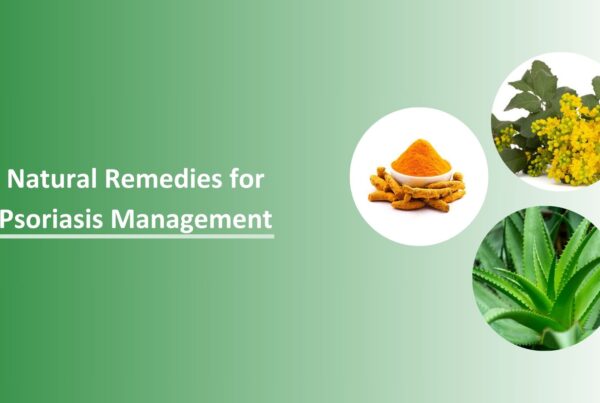Introduction
A rare disease, also referred to as an orphan disease, is a medical condition that impacts a small portion of the population compared to the general populace. For example, the European Union defines a disease as rare if it affects no more than 50 per 100,000 individuals, while the World Health Organization considers a rare disease to be one that affects fewer than 65 per 100,000 people.
In India, it is estimated to have approximately 100 million individuals affected by rare diseases, accounting for around 6-8% of the population.
These conditions can encompass genetic disorders, infectious diseases, autoimmune disorders, and certain types of cancer. Rare diseases are often chronic, progressive, and life-threatening, leading to significant pain and suffering. Approximately 72% of rare diseases have a genetic basis and nearly 95% lack effective treatments. Rare diseases often exhibit diverse symptoms, which can vary considerably among individuals sharing the same condition. These conditions frequently manifest in childhood, with around two-thirds of individuals affected by rare diseases being children.
Patient’s Story
In Ghaziabad, a 13-year-old boy’s struggle with Hunter Syndrome sheds light on the dire circumstances faced by rare disease patients in India. Hunter Syndrome, a rare genetic disorder falling under lysosomal storage diseases, severely impacts the boy’s health and well-being. Despite his diagnosis, the absence of suitable medication or therapy for Hunter Syndrome in the country leaves him with limited treatment options.
This lack of available treatment compounds the physical, emotional, and financial burdens on both the patient and his family, highlighting the profound challenges encountered by individuals with rare diseases.
Despite initiatives like the National Policy for Treatment of Rare Diseases (NPTRD) in 2017, persistent barriers such as inadequate awareness, stigma, and diagnostic facilities hinder effective care delivery. This case underscores the pressing need for enhanced awareness, treatment accessibility, and policy reforms to address the unmet needs of rare disease patients in India.
Special Date For Rare Disease
Rare Disease Day occurs each year on the final day of February to increase awareness surrounding rare diseases and their effects on individuals and their families. The objective is to advance research efforts, enhance treatment accessibility, and offer support to those affected by rare diseases.
Rare Disease Day 2024, set for February 29, focuses on the theme “Unite for Change! Unite for Equity!” This theme underscores the global movement’s goal of achieving true equity for the 300 million individuals worldwide living with rare diseases. The campaign aims to unite individuals, organizations, policymakers, and stakeholders in addressing key areas:
- Awareness and Understanding: Increasing awareness and understanding of rare diseases is crucial for early detection and proper care.
- Access to Diagnosis and Treatment: Improving access to diagnosis, treatment, and care is essential for those affected by rare diseases.
- Equitable Healthcare: Ensuring equitable access to healthcare and social support for individuals with rare diseases is paramount.
- Research and Development: Increasing research and development efforts focused on rare diseases can lead to better treatments and outcomes.
To achieve these goals, actions such as public education, genetic testing accessibility, specialty care centralization, research participation facilitation, and digital resource development are necessary. By implementing these strategies, the rare disease community can work towards equitable access to diagnosis, treatment, and care, ultimately improving the lives of those affected by rare diseases.
Types of Rare Diseases
The National Institutes of Health (NIH) estimates that there are over 7,000 rare diseases. The National Organization for Rare Disorders (NORD) provides accessible information on approximately 1,300 specific rare diseases through patient-friendly reports on its website, www.rarediseases.org. For the most comprehensive listing of rare diseases in the U.S., the NIH Genetic and Rare Diseases Information Center (GARD) website, rarediseases.info.nih.gov/diseases, offers extensive resources.
Rare diseases encompass a wide range of conditions, each with its unique characteristics and manifestations. Rare diseases encompass a vast array of medical conditions, each characterized by their low prevalence in the population. They can be broadly categorized based on factors such as their underlying causes, symptoms, and affected organ systems.
- Genetic disorders, stemming from abnormalities or mutations in DNA, include conditions like cystic fibrosis and Huntington’s disease.
- Metabolic disorders involve irregularities in the body’s metabolic processes, such as phenylketonuria (PKU) and Gaucher disease.
- Autoimmune diseases, like systemic lupus erythematosus (SLE) and autoimmune hepatitis, arise when the immune system attacks the body’s own tissues.
- Neurological disorders, such as amyotrophic lateral sclerosis (ALS) and Rett syndrome, affect the brain, spinal cord, and nerves.
- Hematological disorders, including hemophilia and sickle cell disease, impact the blood and blood-forming tissues.
- Some cancers, like mesothelioma and pancreatic neuroendocrine tumors, are considered rare due to their low incidence rates.
- Rare infectious diseases, such as leishmaniasis and Chagas disease, have limited prevalence or distribution.
- Congenital anomalies, like congenital heart defects and cleft lip and palate, are present at birth and often result from genetic or environmental factors.
- Additionally, undiagnosed diseases present significant challenges for patients and healthcare providers.
Each category of rare diseases poses unique challenges in diagnosis, treatment, and management, highlighting the need for increased awareness, research, and collaboration to improve outcomes for affected individuals.
Worldwide prevalence of RD
Rare diseases are estimated to affect between 3.5% and 5.9% of the global population, impacting approximately 260 to 440 million individuals worldwide. A recent study published in the European Journal of Human Genetics affirmed that around 300 million people globally live with a rare disease at any given moment. These conditions are frequently genetic, with 72% of them having a genetic basis, and roughly 70% beginning in childhood.
Understanding Inheritance Patterns in Rare Diseases
Rare diseases can manifest various inheritance patterns, including autosomal recessive, autosomal dominant, X-linked recessive, and X-linked dominant. Autosomal recessive inheritance is the most common type observed, followed by autosomal dominant inheritance. Additionally, rare diseases may exhibit oligogenic and digenic inheritance. The prevalence of autosomal recessive inheritance tends to increase with rarity, while multigenic/multifactorial inheritance decreases. Notably, the number of genes associated with specific rare diseases often decreases with decreasing rarity.
The primary inheritance patterns for rare diseases are autosomal recessive and autosomal dominant. Autosomal recessive inheritance involves both parents being carriers of the mutated gene, with examples including Tay-Sachs disease and sickle cell anemia.
On the other hand, autosomal dominant inheritance typically shows an affected parent in each generation, as seen in diseases like Huntington’s disease and neurofibromatosis. Less common patterns like X-linked recessive and X-linked dominant inheritance, along with mitochondrial inheritance, are also observed in certain rare diseases.
Are Rare Diseases really Rare?
While rare diseases are indeed considered rare based on specific criteria, they are more prevalent than commonly assumed. According to definitions by the European Union and the United Kingdom, a disease is classified as rare if it impacts fewer than 1 in 2,000 individuals. However, globally, rare diseases affect between 3.5% and 5.9% of the population, totaling between 263 million and 446 million people. In the United States, the National Organization for Rare Disorders (NORD) defines a disease as rare if it affects fewer than 200,000 Americans. Despite being individually rare, collectively rare diseases impact millions of people worldwide.
Global Perspective on Rare Diseases
Rare diseases have gained recognition as a significant global public health concern, driven by shared challenges and unmet needs among affected individuals worldwide. Here’s a summary of key insights:
International Recognition: The United Nations has underscored the importance of integrating rare diseases into policies, aligning with the goal of inclusivity outlined in the 2030 Sustainable Development Agenda.
Impact of Genomics: Advances in genomics have revolutionized rare disease research, leading to improved diagnosis, treatment, and policy formulation on a global scale.
Prevalence: Although individually rare, rare diseases collectively affect a notable portion of the global population, estimated at 3.5-5.9%.
Common Challenges: Patients with rare diseases confront similar obstacles such as lengthy diagnostic journeys, lack of support, and high treatment costs, impacting various aspects of their lives.
Policy Initiatives: Global efforts are underway to develop and implement rare disease policies aimed at addressing the needs of affected individuals and their families.
The global framework for rare diseases underscores the importance of coordinated action, policy development, and research advancements to enhance access to diagnosis, treatment, and support services for individuals affected by rare diseases worldwide.
FDA’s Supportive Programs and Initiatives
The FDA has played a significant role in addressing rare diseases through various programs and initiatives. The Orphan Drug Act, enacted in 1983, defines rare diseases as those affecting fewer than 200,000 people in the United States, with many lacking FDA-approved treatments. Since then, the FDA has approved hundreds of drugs for rare diseases, with more than half of novel drug approvals in 2022 being for rare disease treatments.
To support the development of medical products for rare diseases, the FDA administers incentive programs like the Orphan Drug Designation program and the Rare Pediatric Disease Priority Review Voucher program. Grant programs such as the Orphan Products Grants program and the Pediatric Device Consortia (PDC) Grants program offer funding for rare disease research.
The FDA collaborates with patients, advocacy groups, and industry partners to advance rare disease research. Public-private partnerships address challenges in drug development. Initiatives like the Accelerating Rare Disease Cures (ARC) Program drive innovation. The FDA provides training, guidance, patient-focused meetings, and grants to support rare disease development, showcasing its commitment to enhancing treatments.
Indian Scenario
Despite India accounting for approximately one-third of global rare disease cases, these conditions receive inadequate attention due to resource constraints. While the National Policy on Rare Diseases (NPRD) was formulated in 2017, its lack of clarity on disease coverage and patient eligibility prompted a revised version in March 2021. In a recent virtual panel discussion organized by the Observer Research Foundation (ORF) to commemorate Rare Diseases Day, experts highlighted key challenges and opportunities in addressing these conditions.
Around 80% of rare diseases in Southeast Asia have genetic origins, with 70% appearing in childhood. In India, where 9% of the population is affected by rare diseases, cultural practices like consanguineous marriages contribute to their prevalence. Only 5% of rare diseases globally have specific treatments, leading patients to rely on supportive care, despite high treatment costs. Diagnosis delays, inadequate healthcare infrastructure, and reliance on imported medications exacerbate the situation. The National Policy for Rare Diseases provides government assistance to those below the poverty line but excludes many facing financial hardship. Crowdfunding and patient advocacy groups offer some relief, but challenges persist in accessing treatments and support.
Around 72 to 96 million individuals in India are believed to be affected by rare diseases, with approximately 450 different rare diseases reported among the population. This estimation is based on data from the National Registry for Rare Diseases, which has documented over 4,000 rare diseases in the country.
According to a 2021 report from the Union Health Ministry, some of the most commonly reported rare diseases in India include:
- Primary immunodeficiency disorders
- Lysosomal storage disorders
- Hemophilia
- Thalassemia
- Sickle cell anemia
- Autoimmune diseases
- Hirschsprung disease
- Gaucher’s disease
- Cystic Fibrosis
Market analysis of Rare disease vs Oncology market
The global rare disease treatment market is experiencing substantial growth, reaching over $195 billion in 2022, and is expected to expand further at a compound annual growth rate (CAGR) of more than 8.5%, reaching $435 billion by 2032. Another projection suggests a CAGR of 12.8% from 2022 to 2030, with the market size expected to reach $128.42 billion by 2030.
Cancer holds the largest share in therapeutic areas, followed by genetic disorders, neurological disorders, blood disorders, autoimmune diseases, and infectious diseases. By 2030, the market is expected to reach a value of USD 335.84 billion. Within this market landscape, oncology emerges as a dominant segment, poised to achieve the highest CAGR during the period from 2022 to 2030. This prominence is attributed to the elevated prevalence and recurrence rates observed in rare cancer indications, underscoring the significance of oncology within the rare disease treatment market.
The U.S. rare disease market plays a significant role in this growth, benefiting from initiatives like the Orphan Drug Act and substantial investments from large pharmaceutical companies in rare disease research. In 2021, the market reached $119.6 billion, with a projected CAGR of 12.8% from 2022 to 2030, driven by a robust pipeline of orphan drugs and approvals from the Center for Drug Evaluation and Research (CDER). Despite progress, challenges remain due to high research and development costs, impacting drug prices.
Rare diseases present a substantial challenge to public health, impacting a small fraction of the population yet yielding significant consequences for those affected. The global market for rare disease treatments is poised for significant expansion, with a projected compound annual growth rate (CAGR) of 12.8% from 2022 to 2030. This growth underscores the increasing demand for effective treatments in addressing rare diseases.
Notably, oncology treatments within the rare disease sphere hold a prominent position due to their prevalence. Cancer held the largest market share in 2021 due to its high prevalence and recurrence rates among rare cancer indications. Therapeutic segments include cancer, neurological conditions, cardiovascular conditions, musculoskeletal conditions, hematologic disorders, infectious diseases, metabolic disorders, endocrine disorders, and more.
When prioritizing treatments, it is imperative to consider the severity of the diseases rather than solely their rarity. The “health-loss criterion” offers a more comprehensive evaluation by assessing diseases based on their impact on healthy life years, providing a robust measure for healthcare prioritization.
National Policy for Rare Diseases 2021: Framework and Implementation
The National Policy for Rare Diseases, introduced by the Government of India in 2021, represents a comprehensive approach to address the challenges faced by individuals with rare diseases. The policy aims to cater to various aspects of rare disease management, including patient load, diagnostic framework, awareness activities, prevention, and management options. One of the key highlights of the policy is the adoption of a more inclusive definition of rare diseases to ensure comprehensive coverage.
Classification of Rare Diseases: The policy divides rare diseases into three categories: Group 1 (conditions treatable with one-time curative measures), Group 2 (conditions necessitating long-term or lifelong treatment), and Group 3 (conditions with available treatment but facing challenges in patient selection, high costs, and lifelong therapy).
Financial Assistance: Individuals afflicted with rare diseases classified under Group 1 will be eligible for financial aid of up to Rs. 20 lakh under the Rashtriya Arogya Nidhi umbrella scheme.
Establishment of Centers of Excellence (CoE): The policy lays the foundation for Centers of Excellence (CoE) across the country, with AIIMS Delhi designated as the Nodal Body. These CoEs are tasked with several responsibilities, including education and training for medical professionals, screening programs, diagnostics, prevention initiatives, research on low-cost diagnostics and therapeutics, and treatment of rare diseases. Other institutions designated as CoEs include Maulana Azad Medical College, Sanjay Gandhi Post Graduate Institute of Medical Sciences, and others.
Eight health facilities will receive the designation of ‘Centers of Excellence,’ each receiving one-time financial support of up to Rs. 5 crore for the upgrade of diagnostic facilities.
Recent Additions to CoEs: Recent additions to the CoEs include Sree Avittam Thirunal Hospital in Thiruvananthapuram, Kerala, and the Institute of Child Health and Hospital for Children in Chennai, Tamil Nadu.
Establishment of NIDAN Kendras: The policy also establishes NIDAN Kendras (National Inherited Diseases Administration), which are responsible for screening, genetic testing, and counseling for rare diseases. NIDAN Kendras operate under the guidance of CoEs in their respective regions, and those equipped for treatment may do so under CoE supervision.
Key Roles of CoEs and NIDAN Kendras: CoEs and NIDAN Kendras serve as central points of contact for managing patients with rare diseases. They play a crucial role in determining disease load, exploring treatment options, and facilitating access to comprehensive care. Additionally, they act as focal points for the National Registry of Rare Diseases, aiming to ensure comprehensive data collection for research and development purposes. Moreover, these centers organize Continuing Medical Education (CME) programs, research initiatives, and awareness campaigns to enhance focus on indigenous research and local production of medicines.
The National Policy for Rare Diseases represents a significant step towards improving the management and treatment of rare diseases in India, with a focus on comprehensive care, research, and awareness.
Political Social Technological Implication Of RD
Rare diseases have significant political, social, and technological implications that shape the landscape of healthcare and research. Here are some key points based on the provided search results:
Political Implications:
Governments and regulatory bodies play key roles in developing policies and frameworks to address challenges faced by individuals with rare diseases. Policies should focus on enhancing access to treatments, providing research funding, and supporting caregivers. Regulatory incentives like the Orphan Drug Tax Credit are crucial for encouraging research and development in this area. Increased government investment is necessary to broaden patient access to effective treatments, highlighting the importance of prioritizing rare disease healthcare.
Social Implications:
Patient organizations are pivotal in raising awareness and advocating for better healthcare services and research programs for rare diseases. These conditions impose significant burdens on patients and caregivers, impacting them physically, psychologically, and financially, necessitating support from society. To address these challenges effectively, policymakers, regulators, and healthcare providers must engage with the rare disease community to gain insights into their experiences and unique needs.
Technological Implications:
Social media platforms serve as valuable research tools for rare genetic diseases, offering insights into patient experiences, needs, and challenges. By leveraging social media data, researchers can gather information on rare diseases, study participant characteristics, and identify research gaps in a patient-centric manner. This approach enables a comprehensive assessment of the impact of rare diseases, encompassing not only economic factors but also their physical, psychological, and social implications on patients, families, healthcare systems, and society.
Indian Implication Of High Cost
The high cost associated with treating rare diseases in India presents substantial challenges for patients, families, and the healthcare system. Imported medicines historically come with exorbitant price tags, rendering treatment financially unattainable for many individuals. However, governmental efforts have been instrumental in tackling this issue by manufacturing affordable drugs domestically.
The introduction of ‘Made in India’ medications has drastically slashed treatment expenses, making essential therapies more accessible. Nonetheless, the financial strain on families coping with rare diseases remains severe, often leading to economic hardship and emotional distress.
Additionally, the absence of comprehensive health insurance coverage exacerbates these challenges, underscoring the urgent need for sustainable solutions to ensure equitable access to affordable treatments for all affected individuals.
Patients with rare diseases in India encounter numerous obstacles when seeking treatment:
- Diagnostic delays are common, with an average wait time of 7 years for a correct diagnosis.
- Treatment options are limited, with only approximately 8% of rare diseases having approved therapies globally.
- High treatment costs pose a significant barrier to access, as most treatments are unaffordable for many patients, and insurance coverage is often lacking.
- Insufficient awareness among both patients and healthcare professionals hampers accurate diagnosis and treatment.
- Regulatory hurdles for imported treatments contribute to increased costs and limited availability.
- Infrastructure challenges persist, making it difficult to establish specialized centers for rare disease care.
- Low representation in global clinical trials further limits access to innovative treatments for Indian patients.
Efforts by the Indian government, such as the National Policy for Treatment of Rare Diseases (NTPRD), the establishment of Centers of Excellence, and customs duty waivers for rare disease medicines, aim to address these issues. However, further actions are needed to enhance the accessibility and affordability of treatments for rare diseases in India.
Financial Strain and Cost Considerations
The strain exerted on public health infrastructure by rare diseases is considerable and stems from various factors.
- Firstly, the elevated costs associated with diagnosing and treating rare diseases, attributed to their low prevalence, specialized expertise requirements, and limited therapeutic options, pose significant financial challenges.
- Secondly, the protracted and intricate diagnostic processes often lead to delays in treatment initiation, thereby exacerbating patient outcomes.
- Thirdly, the constrained availability of effective treatments necessitates that patients rely predominantly on symptomatic relief rather than curative interventions.
- Furthermore, the multidisciplinary nature of care required for rare diseases, coupled with the need for sustained monitoring, places additional demands on healthcare systems.
- Lastly, the distinctive challenges posed by rare diseases necessitate tailored strategies and innovative solutions to cater to the diverse needs of affected populations.
Addressing these challenges mandates improvements in diagnostics, the expansion of treatment options, and the enhancement of healthcare delivery models, all of which should be underpinned by public health policies prioritizing collaboration, innovation, and investment in rare disease research and care.
Healthcare System Challenges in Managing Rare Diseases
Healthcare systems, particularly in countries like India, grapple with managing rare diseases due to resource constraints, diagnostic delays, economic burdens, workforce shortages, and limited access to care. These challenges, stemming from resource scarcity and expertise deficits, lead to prolonged suffering and economic strain. Diagnostic delays worsen health outcomes by hindering timely interventions.
The economic impact is significant, with costs surpassing those of common ailments, aggravated by the lack of effective treatments. Shortages in skilled healthcare professionals and limited diagnostic capabilities impede rare disease management. Geographical barriers and inadequate infrastructure restrict access to care, especially in rural areas.
Overcoming these challenges requires developing disease-specific guidelines, investing in infrastructure and technology, capacity building for healthcare professionals, and improving access to care and treatment options. Enhancing healthcare system capabilities and workforce expertise can better meet the needs of individuals with rare diseases, improving overall health outcomes for this vulnerable population.
Development of RD medicines in India
India is set to manufacture expensive medicines for 13 rare diseases, aiming to significantly reduce treatment costs. In the first phase, four medicines have already received marketing approval, with another four under review. These efforts seek to bring down expenses from millions to thousands of rupees annually, benefiting patients with genetic conditions. The initiative targets to produce off-patent drugs domestically, potentially lowering treatment costs by up to 100 times. The next stage involves exploring the production of patented gene and enzyme replacement therapies with local pharmaceutical companies. With rare diseases affecting an estimated 6-8% of the population in India, the move is a significant step towards improving access to affordable treatment.
For instance, indigenous medicines could reduce treatment costs for diseases like Tyrosinemia type-1 and Gaucher’s Disease from crores to lakhs annually, making them more accessible to patients. Additionally, the production of hydroxyurea syrup for sickle cell anemia is expected to drastically reduce costs, with the home-grown version priced significantly lower than the current market options. Commercial supply of these medicines is anticipated to begin by March 2024, offering hope for patients burdened by high treatment expenses.
As awareness and diagnosis of rare diseases increase, the number identified has surpassed 7,000, impacting approximately 3.5% to 5.9% of the global population, translating to around 260 to 440 million individuals worldwide, with children forming the majority of those affected. Notably, some diseases initially classified as rare may eventually outgrow this classification, as seen with Restless Legs Syndrome (RLS), which was considered rare until 2010.
Forecast for Market Growth in Rare Disease Diagnostics and Treatment
The forecast for the rare disease diagnostics and treatment market from 2023 to 2030 indicates substantial growth and progress in the field. The global market for rare disease diagnostics is expected to rise from USD 22,460 million in 2022 to USD 36,260 million by 2028, with a compound annual growth rate (CAGR) of 8.3% during the forecast period. Similarly, the rare disease treatment market reached over USD 195 billion in 2022 and is projected to demonstrate a CAGR of more than 8.5% from 2023 to 2032. This growth is anticipated to be fueled by ongoing drug research, regulatory approvals, and advancements in therapeutic molecular medicines.
Conclusion
In conclusion, despite the significant hurdles faced by rare disease patients in accessing diagnosis and treatment, there is a notable acknowledgment of the need to address these challenges. Governments have shown commitment through initiatives such as guideline development, increased research funding, and healthcare infrastructure improvements. Looking ahead, optimism surrounds advancements in awareness, diagnostics, and treatment options, promising better outcomes for rare disease patients. Continued government dedication suggests a positive trend towards improved care and support for affected individuals and their families. As governments persist in addressing these challenges, advancements in research, healthcare delivery, and policy development are expected, leading to a brighter future for individuals with rare diseases.
Written By
Aswini PriyaMedical Content Writer
Reviewed By
Dr. AnchalMedico Expert
Last Updated
29 Feb 2024 | 11:00 AM (IST)










